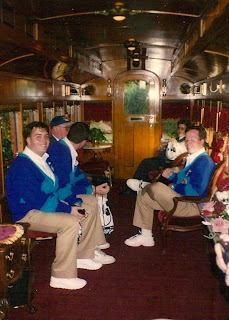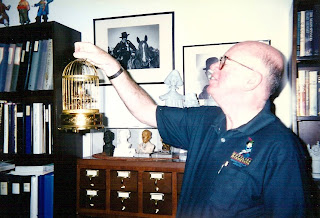Just beyond Cottonwood Creek is the Frontierland Depot of the Disneyland Paris Railroad, Thunder Mesa's connection to the rest of the wide open west. Folks bound for California or parts unknown might book passage on the next train leaving town by stepping up to the Ticket Office at the front of the station house.
Inside, other services are provided, including message receipt and delivery via the Telegraph Office. In fact, it sounds like there's a message coming in right now. Too bad the telegraph operator's on break! Otherwise, he'd be able to tell us it's a portion of Walt Disney's dedication speech for Disneyland, delivered in Morse Code.
Peeking into the Station Master's office, you can get a view of how things operate around here. Most importantly, there's the train schedule to tell you when specific lines may be arriving or departing. The trains listed include three of the ones that really operate at Disneyland Paris (G. Washington, W.B. Cody and C.K. Holliday - Eureka was added later and isn't included in this original graphic). It also includes other train names meant to evoke the spirit of the west and the Gold Rush. My favorite, though, is the inside joke: Graybar Hotel Express. Graybar hotel is a common idiom for jail or prison. Notice that the destination is Leavenworth, and they're selling one-way tickets only.
Out the other side of the station house by the tracks is a sign welcoming people who are just arriving in Thunder Mesa. This is definitely a boom town. Just look at that population explosion!
Of course, for those headed out of town or just passing through, the Frontierland Depot is a place for trains to stop and take on water for the journey ahead or pick up cargo from the Thunder Mesa Shipping Co. The stop's never long, though, and those engines are soon chugging off into the wilderness, ready for the next adventure.
For more on the Disneyland Paris Railroad and its trains, be sure to click back to this article on the Main Street Station.





















































